The 1936 film serial Flash Gordon was the first American space opera brought to the screen. It’s high camp, silly and loads of fun, and boasts high production values for a serial, as well as an unusually imaginative and original script, straight from the pages of the comic strip. That the spaceships are held by visible strings and the dragons look like men in cardboard suits just adds to the fun. 7/10
Flash Gordon. 1936, USA. Directed by Frederick Stephani, Ray Taylor. Written by Basil Dickey, Ella O’Niell, George H. Plympton, Frederick Stephani. Based on the comic strip by Alex Raymond and Don Moore. Starring: Buster Crabbe, Jean Rogers, Frank Shannon, Charles Middleton, Priscilla Lawson, Richard Alexander, Jack ”Tiny” Lipson, James Pierce, Ray ”Crash” Corrigan. Produced by Henry McRae. IMDb score: 7.3
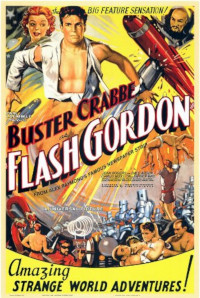
The story of one of the most influential science fiction adventures of all time – Flash Gordon – starts in 1928 with the pulp magazine Amazing Stories. In particular the short stories Armageddon 2419 A.D. and The Airlords of Han, which featured a central character called Anthony Rogers. In 1929 Philip Nowlan and Dick Calkins adapted the character, renamed Buck Rogers, as a comic strip that soon featured in many of the prominent newspapers in the US, quickly becoming one of the most successful comic strips in the country. The futuristic world of the 25th century with its strange space crafts, jet packs, weapons, robots and designs, the outlandish and racially stereotyped Mongolian villains, and of course the handsome, brave hero Buck Rogers instantly inspired a whole range of similar science fiction comics. Some failed, others, like Brick Bradford, became highly successful. But few were able to touch the popularity of Buck Rogers – save one, which came hurtling along like a runaway planet Mongo on a collision course with Earth in 1934. Flash Gordon quickly surpassed the popularity of Buck Rogers, and stands to this day as one of the most influential comics in history.
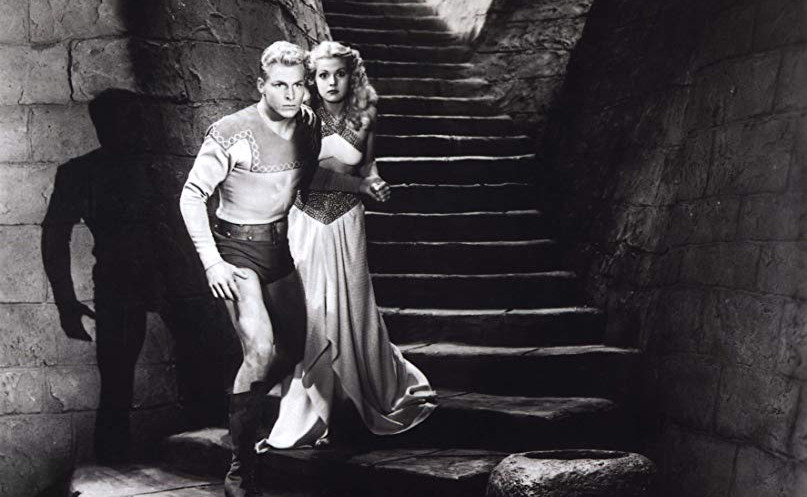
Following the success of Buck Rogers, the King Features Syndicate reached out to comics drawer Alex Raymond, who had impressed the bosses with his work as an assistant and ghost artist on a few of their strips, including Blondie, as well as with his principal work on Secret Agent X-9. He was asked to create a Buck Rogers-style strip for the company, ”in the spirit of a Jules Verne adventure”. Along with ghost writer Don Moore, Raymond developed Flash Gordon, which turned out to be inspired more by pulp writers like Edgar Rice Burroughs and E.E. “Doc” Smith than Jules Verne. In the first strips, which appeared in 1934, the duo scripted what was ultimately to become the definitive Flash Gordon story. Flash Gordon, a famous polo player, and his girlfriend-to-be Dale Arden, accompany the scientist Hans Zarkov on his spaceship, headed to the planet Mongo, which is on a collision course with Earth.
The story of an athletic hero and his would-be-girlfriend preparing to fly to a planet to avoid a collision with Earth was ripped straight from the pages of Philip Wylie’s novel When Worlds Collide, published the previous year (and turned into a film in 1951, review). Another clear inspiration is Edmond Hamilton’s 1928 pulp story Crashing Suns, which has a similar setup, but unlike in When Worlds Collide, Hamilton’s space rangers are captured by evil aliens when they approach a sun which is on collision course with Earth, just like in Flash Gordon.
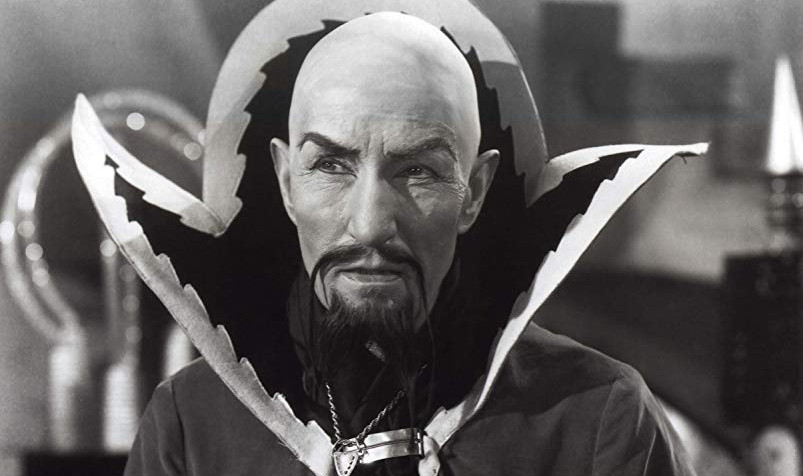
On the planet Mongo Flash and his friends are captured by the evil emperor Ming, hell-bent on destroying Earth, and his beautiful daughter Aura, who falls in love with Flash. Flash fights his way to freedom and ultimately makes friends with noble Prince Barin in the forests of Arboria, who becomes an ally against Ming. Our intrepid heroes encounter Prince Vultan of the Hawkmen in his flying city, experience monsters, perils, interplanetary war and romance.
While Flash Gordon’s influence on other works of fiction is often retold, it’s surprisingly rare to find a comment on how the freely the comic pilfered most of its content from other sources – but much like Star Wars still managed to turn all the disparate elements into a unique blend. Ming is often cited as inspired by Sax Rohmer’s villainous character Fu Manchu, but an even closer relative is the lesser known Chinese ruler of the moon(!) in Otis Adalbert Kline’s 1930 pulp novel Maza of the Moon. Like Ming, the Manchurian menace (with similar Fu Manchu moustaches as Ming) threatens to destroy the Earth from his base on the moon, and like Flash Gordon, the book features a bold hero who travels to the moon – only to find that the evil ruler has a beautiful Princess Aura of his own, only here she is called Maza. The most obvious inspiration for Prince Barin is naturally Robin Hood, but in fact his story function bears closer resemblance to Prince Dunark in E.E. “Doc” Smith’s 1928 story The Skylark of Space. Like Barin, Dunark is a rival for the throne of a contested kingdom on a far-away planet, and like Barin, he becomes an ally of the hero in fighting the evil ruler. While Moore clearly avoids the most obvious tropes from Burrough’s ouvre, his influence is naturally clear. And of course, the biggest inspiration of all for Flash Gordon was the afore-mentioned Buck Rogers, even down to the Mongolian villains.
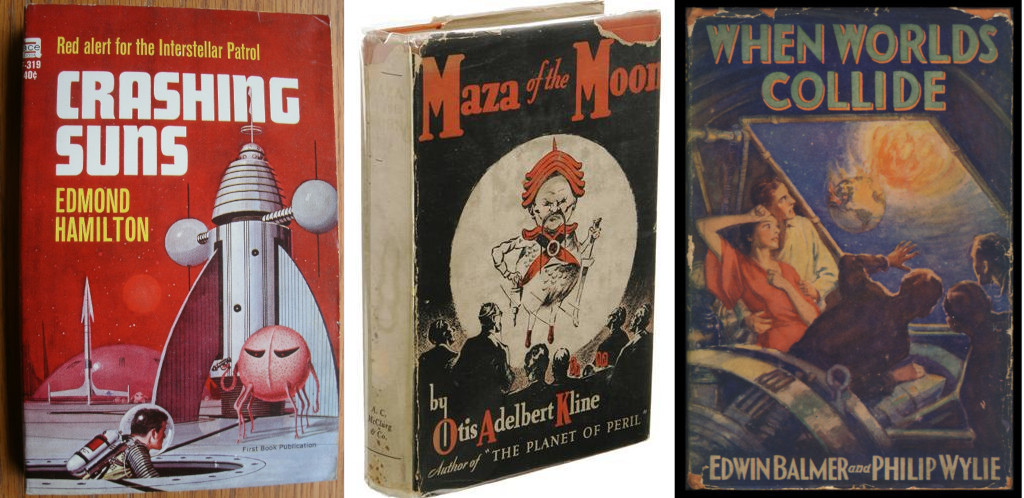
The Flash Gordon strip was an instantaneous hit (along with the accompanying Jungle Jim, also created by Moore and Raymond) and soon left Buck Rogers far behind in its wake. There are many reasons to Flash Gordon’s massive success. One is the wonderful imagination and pulp fiction sensibilities of Don Moore, a veteran pulp editor and writer. Another is the fact that the stories, although still very juvenile in their own right, have an appeal to an adult audience. The creative duo didn’t shy away from romantic themes, and created double love triangles between Ming, Dale, Flash, Aura and Barin.
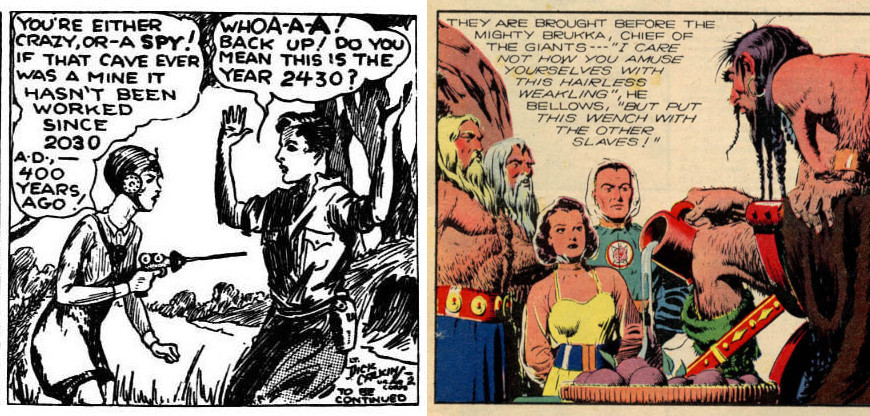
The greatest reason for Flash Gordon’s success was still arguably the drawings by Alex Raymond, who created a whole new look for the science fiction comic, one that has endured to this very day. Where Buck Rogers was certainly well and imaginatively drawn, it still harked back to the classic kiddie comic style. Raymond expanded the sphere of comics into art, and drew influences from Romantic and Art Noveau artists and illustrators, researched architecture and ancient and antique cultures for his worlds, and gave his creatures and settings a realistic look, promoting a sense of ”heightened realism”. His technique and style has since been imitated ad infinitum by other artists. The sumptuous and epic sprawl of the adventures meant that one could marvel at the images without even being particularly interested in the stories. See the above for a comparison between Buck Rogers and Flash Gordon.

Watching all this happening was Universal Studios. In 1934 the studio was in economic trouble, despite the success of their horror and sci-fi film franchise, that included Dracula and Frankenstein (1931, review), The Mummy (1932) and The Invisible Man (1933, review). Universal had a long track record with serials, although none had been hugely successful in the thirties. One that did do very well was Talespin Tommy (1934), followed by Tailspin Tommy and the Great Air Mystery, which was an even bigger hit. What set these apart, was that they were based on comics, a fairly young medium that had evolved alongside cinema, and had until now not generally been regarded as suitable sources for cinematic stories. Universal realised that the episodic nature of the comic strips made them perfect as blueprints for cliffhanger serials. Many serials suffered from a sag in the middle of the season, as the initial setup was made, and the production drew its breath for the climax. A good comic doesn’t have this problem, as the action must be maintained throughout to keep the reader engaged in each episode. Furthermore, a good comic strip also has a thought-out dramatic arc, and moves quickly from situation to situation, often introducing new characters along the way, as opposed to many serials, that often begin to repeat themselves. Universal bought up the rights to four more comics, with their eyes obviously fixed on Don Moore and Alex Raymond, as these four included three of their works: Jungle Jim, Secret Agent X-9 and Flash Gordon.
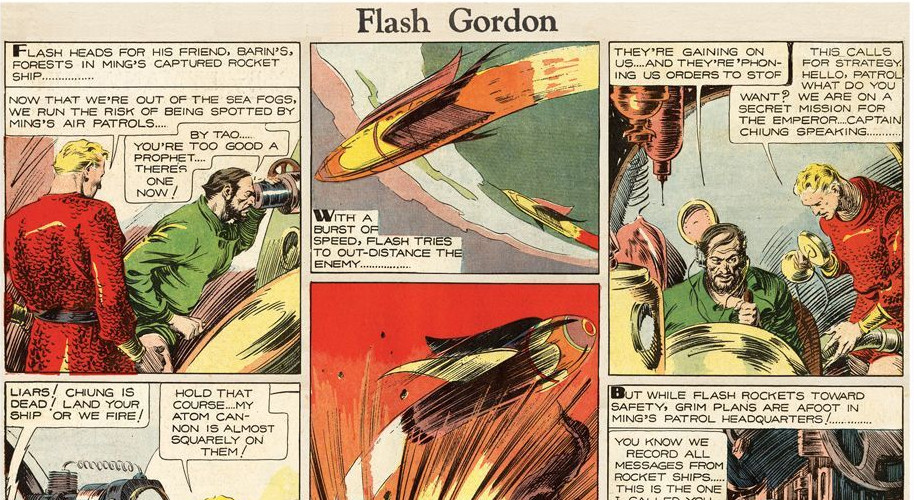
In 1936 the Flash Gordon comics were entering the peak of their popularity. Universal took a huge gamble, and gave the green 31-year-old, German-born director Frederick Stephani an unusually large budget to make the serial. According to some claims, the budget would have been over one million dollars, but in reality the sum was closer to 350,000 dollars. Still, this was a gigantic sum of money, as serials usually cost around 150,000-175,000 dollars to make. Flash Gordon’s producers also had the advantage of many of the films that Universal had produced in previous years. Sets and props from films like Frankenstein, Dracula, Bride of Frankenstein (1935, review), Dracula’s Daughter (1936), and even the 1923 silent movie The Hunchback of Notre Dame all turned up in Flash Gordon. Shots of the Earth from space were borrowed from the 1936 film The Invisible Ray (review). An entire dance segment from The Midnight Sun (1927) was used. Zarkov’s spaceship was bought from Fox – it had previously been used in the 1930 sci-fi musical comedy Just Imagine (review). Universal also bought a scene from the film, with a gigantic mechanical Martian idol and scantily clad female worshippers. The music was recycled from a host of Universal films, mainly Bride of Frankenstein and The Invisible Man.
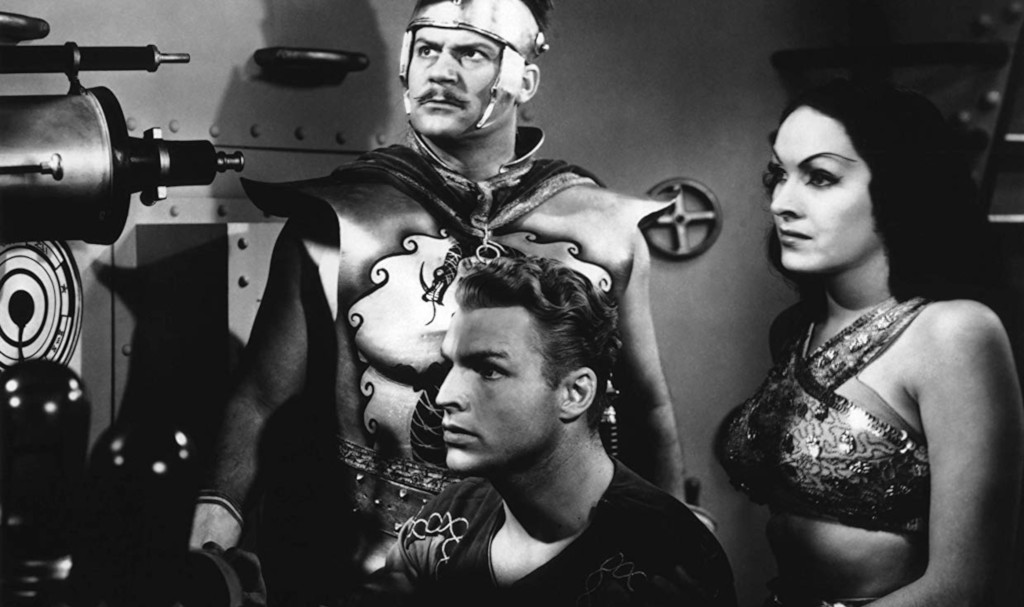
In the title role Universal cast the now legendary Buster Crabbe. Crabbe was an Olympic medallist swimmer, who started appearing as an extra in films in 1930 – he allegedly appeared as one of the manimals in the 1932 film Island of Lost Souls (review). He slowly worked himself up the career ladder until he scored gold in 1933 when he was cast by the independent company Sol Lesser Productions as Tarzan in the serial Tarzan the Fearless, riding the wave of MGM:s 1932 smash hit film Tarzan the Ape Man starring Johnny Weissmuller. Dale Arden was played by Universal’s own starlet Jean Rogers. The third stroke of genius was casting master villain actor Charles Middleton as Ming the Merciless. The rest of the cast were no Oscar winners, but most were able, and even the less nuanced actors were well cast in their roles.
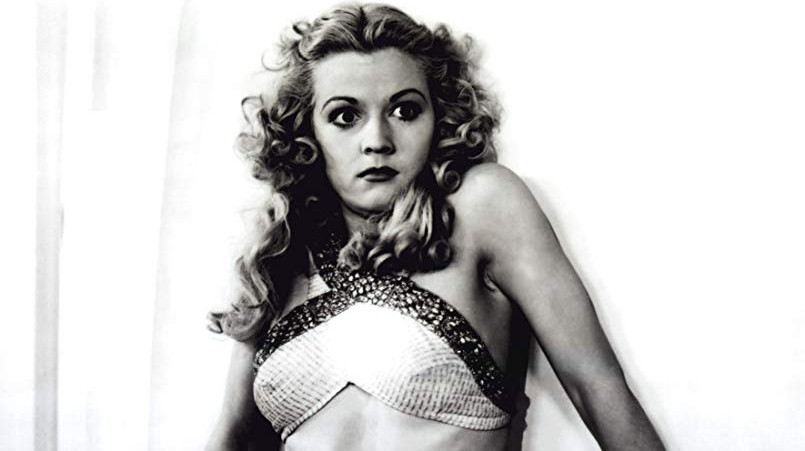
The resulting serial was a resounding hit. The plot follows the original comic pretty accurately. Flash Gordon and Dale Arden’s small plane is hit by a meteor shower, and the two parachute down right next to Dr. Zarkov (named Alexis and not Hans in the serial) and his rocket ship. Zarkov is an old friend of Flash’s scientist father, but now a pariah in the scientific community because of his wild ideas. He tells the couple that he has been right all these years: a planet with intelligent beings is on collision course with Earth, and he now plans to take his rocket ship and go up to advise them to kindly perform evasive manoeuvres. He asks Flash to join him, which our hero eagerly agrees to. This is a trait that Flash will show throughout the series. He embraces danger and charges headlong into any situation, often leaving it to Zarkov and Arden to try and think him out of the mess he puts himself into. This is refreshing, since the show clearly promotes the idea that Flash isn’t all too bright – at this time and place, many film and serial heroes were more or less perfect, both moral smart, brave and strong. In this sense, Flash is more of a character one can relate to: more brawn that brain.
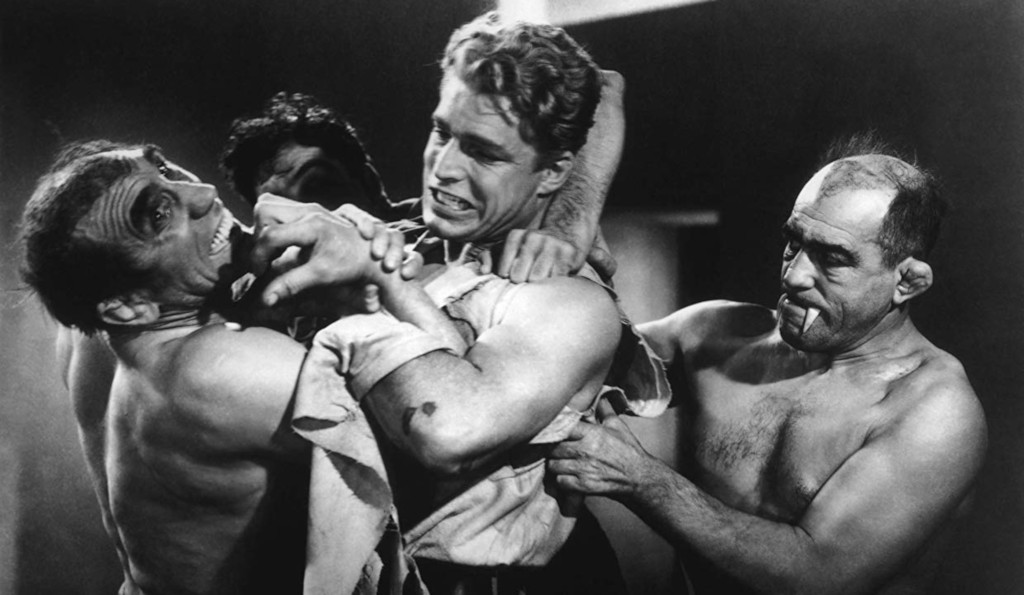
Virginial ingénue Dale Arden is likewise adamant about joining the expedition, and won’t take Zarkov’s no for an answer. Unfortunately, as the serial progresses, much of Dale’s tomboyish resolute dissolves, as she is quickly given to fainting and screaming. Or standing around looking on from a few feet away as Flash is engaged in deadly battle. Zarkov, played by the dark, commanding and intelligent-looking Irish actor Frank Shannon, brings a stern authority to the role and is able to breeze through much of the pseudo-scientific babble. He also speaks in a deep voice with a bizarre mix of Irish and pseudo-Slavic accents, that swings from one extreme to the other, depending on the scene.
As opposed to many serials, where one or two episodes are used to set up the action, Flash Gordon dives right in. We fly off to Mongo, where our heroes are captured by the evil emperor Ming. Already Flash Gordon shows that its aim was not only the kids that were usually the target for both serials and sci-fi, by having Ming become quite obviously sexually aroused by Dale Arden, even attempting to make a physical pass at her before Flash intervenes. There is also a brilliant eye-line matching edit as Ming’s daughter Aura enters between Dale, Aura and Flash – three short seconds tell a whole story that needs no words – that we have a serious triangle problem on our hands. Aura is played by the voluptuous Miss Miami Beach 1935, Priscilla Lawson, a dark and severe beauty, although not much of an actress – but her lacking skills are made up by the sincerity of her delivery. Her film career lasted only five years.
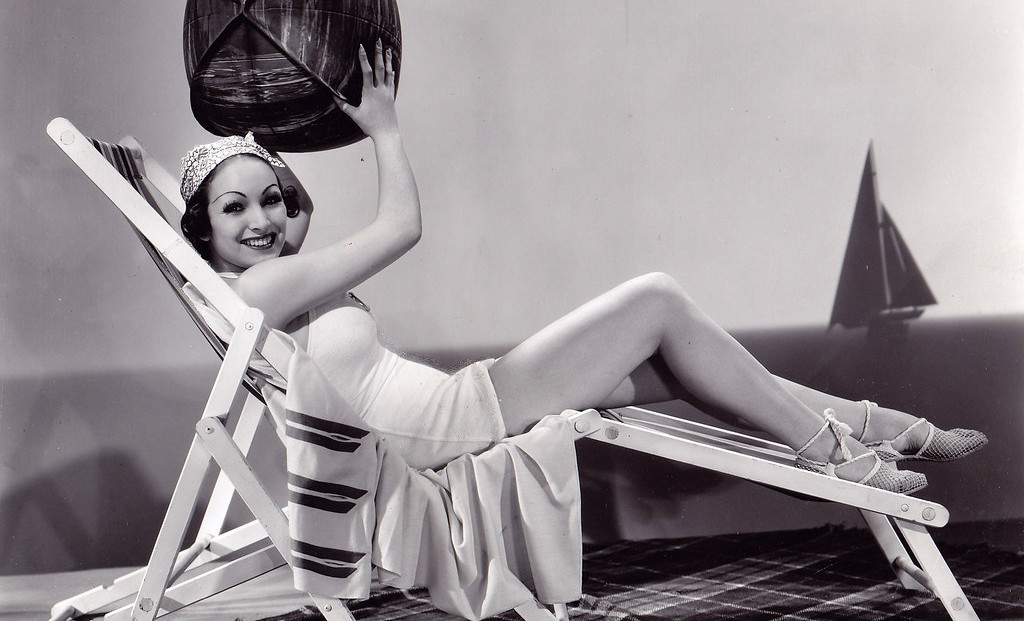
Flash is competently creating problems for himself, as his standard answer to all arguments is flinging his muscled body against his antagonists or grabbing a sword or a club and going at it – often having to be restrained by the very people he is trying to protect. During the first 20 minutes he finds the time not only to parachute out of a plane and fly to Mongo, but also attack the palace guards, charge Emperor Ming, engage in a sword battle with Ming’s guards, get thrown into an arena and make the process short with a throng of wrestlers and finally end up pit alongside Aura. This is all after he escaped the giant iguanas with glued-on horns.
What happens next is not of much importance, but what is, is that our heroes encounter a host of characters, including Prince Thun of the Lion Men, a tall, broad-shouldered James Pierce, who is stiff as a board, but somehow fits right in the role. We also meet staple heavy Richard Alexander, in a rare heroic role as the noble, stocky Prince Barin, who is love-struck by Princess Aura, adding to the romantic tangle. The only actor capable of stealing scenes from the awesome Charles Middleston as Ming, is Jack Lipson as Prince Vultan of the Hawk Men. Lipson was nicknamed ”Tiny”, sarcastically, one can presume, since he is big as a house, both fat, tall and burly. Although he starts out as a baddie, it is impossible not to fall in love with his mad, mad character, with a loud, hearty laugh, and loads of quirks, like first threatening a kidnapped Dale with a bear, and then trying to cheer her up by making shadow puppets with his hands. Absolutely zany. The role feels like it was written with Charles Laughton in mind.
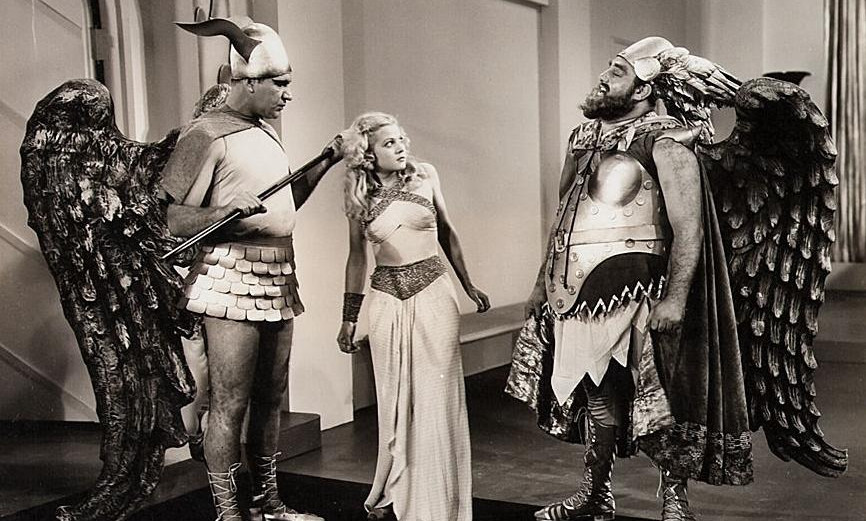
Charles Middleton is awesomely cast, and oft imitated, as a Fu Manchu-like evil Asian character, with a dry, evil wit, superb superiority and a sardonic, wry smirk. He is the only actor, save Lipson, who is able to believably deliver the script’s clunky, theatrical lines, and does so with an air of a Shakespearean villain. Middleton does such a great job that one ends up rooting for him. Even more impressive, though, is Max von Sydow’s spot-on imitation of Middleton in the same role in the 1980 remake.
We get aerial battles, a sky city, dungeons, dragons, sharks, octopuses (no, it’s not octopi), blasters, swords, invisibility machines, ray cannons, sword fights, slave labour, great furnace rooms, elaborately designed throne rooms, tigers, full body armours, duels, ape-monsters, and romance in abundance. The sets are beautiful (if often conspicuously void of furniture), and the costumes absolutely mad. Just look at Ming’s collar, or Vultan’s body armour, which makes room for his impressive belly and have a couple of circular cups for his man-boobs. The Hawk Men all carry gigantic wings on their backs, and everyone seems to be walking around in speedos and armour. The 245 minutes long serial is jam-packed with action at a maddening pace, and not a moment is boring.
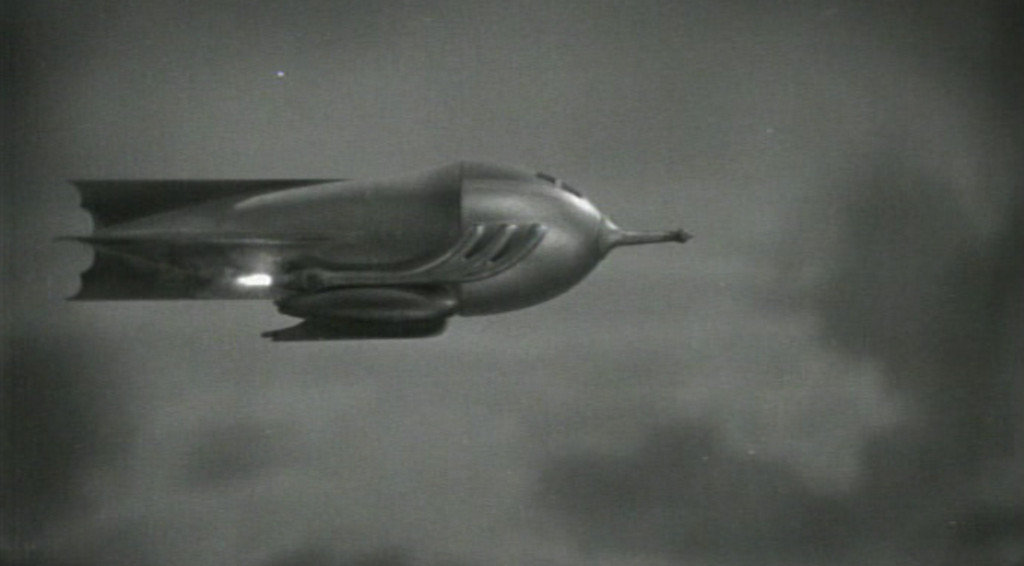
Visually the film doesn’t quite match the epic, majestic beauty of Raymond’s comic, in fact it looks more like a campy parody of it – which probably wasn’t the intention. The special effects are clumsy – the space ships are very clearly miniatures hung on wires, Plan 9 From Outer Space-style, and the fire dragon suit is absolutely wacky. But for a serial the visuals are impressive – there is even some use of split screen and matte paintings, unheard of in a serial. The miniatures hold up fairly well, and the effort put into location scouting and set recycling (and -building, mind you) clearly paid off. The serial, however silly, is actually able to transport the viewer to the crazy, crazy planet of Mongo, and never does it feel like it is faked on a backlot. This is where much of the charm of the serial lies, and one of the reasons it ultimately triumphs – and without a doubt it also inspired the actors.
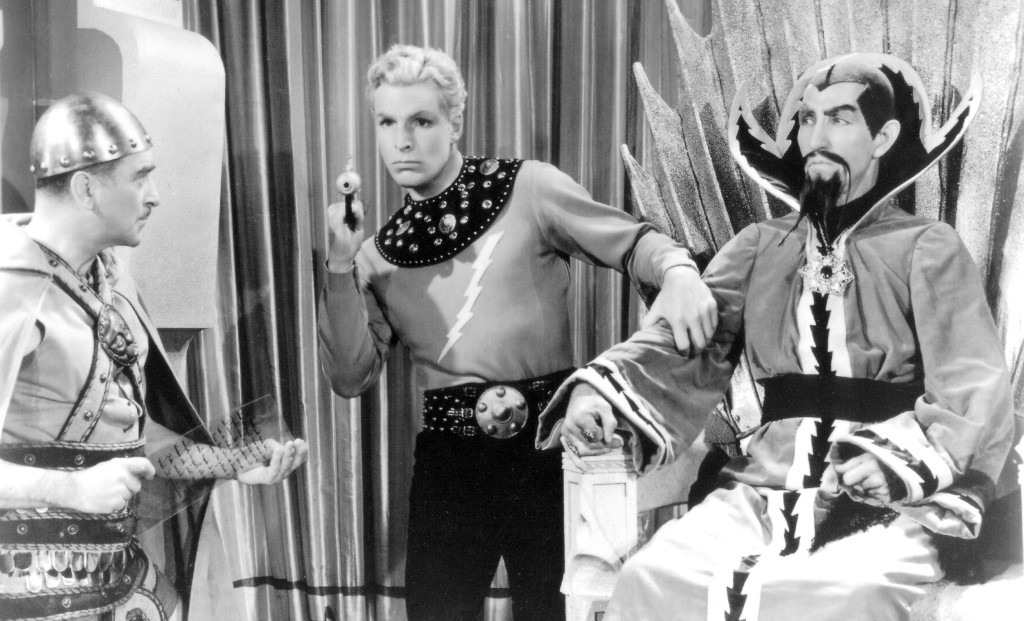
Another reason for the suspension of disbelief is the genius casting of Larry ”Buster” Crabbe, who carries the serial on his shoulders. As stated before, Crabbe was a swimmer cast as Tarzan in 1933 – his birth name was Clarence Linden Crabbe, and he was born in Hawaii. The famous Johnny Weissmuller (born Peter Johann Weißmüller of German-Austro-Hungarian descent) who played Tarzan in a number of films between 1932 and 1948 was a five-time Olympic gold medallist swimmer. Crabbe won a gold and a bronze. He set a world record in the 1932 Los Angeles Olympics, but then again swimming changes its world records as others change their underwear. Now, Weissmuller wasn’t cast as Tarzan because he could swim really fast, but because swimmers were the closest thing one got to the image of the broad-shouldered heroes with triangle-shaped torsos of the pulp magazines in the thirties. This was a time before professional body building as we know it, and even though many film stars were both strong and fit, few had those broad chests and shoulders, and well-defined pecs and muscles we so closely identify with fitness today. Then again, many strong athletes were often stocky. Swimmers were required to be lean, but also naturally got that superhero look that casting agents were looking for, because of their powerful upper bodies and almost Y-shaped profiles.
Of course, not all Olympic swimmers can act, and in that sense I guess Hollywood was just lucky. Buster Crabbe was no Shakespearean actor, but he was good enough to be believable, and could project a broad range of emotions. He also had strong charisma and a wise-cracking, charming attitude, which he brings in abundance to Flash Gordon. It actually works in his favour that he isn’t a professional actor. A professional actor would probably have smirked at the role and winked at the camera, and played Flash with a slightly campy attitude. But Crabbe does the role with a straight face all the way, which helps to sell the story, and gives it some gravitas. This said, Crabbe was not a bad actor at all, and had loads of experience by the time he did Flash Gordon.
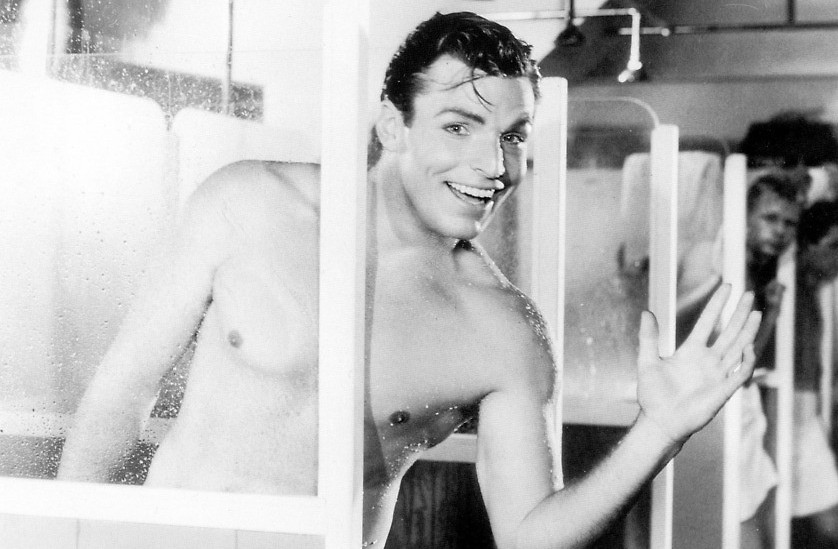
Crabbe would reprise his role as Flash Gordon in two more serials, Flash Gordon’s Trip to Mars (1938) and Flash Gordon Conquers the Universe (1940). Just like the original serials, these were also edited into feature films. As to further solidify his status as the number one leading man in science fiction, he also starred in title role of the 1939 serial Buck Rogers. Crabbe continued to do a few jungle films in the forties, but made a career out of starring as a folk-hero version of Billy the Kid in 36 films. His comedic sidekick in all movies was Al ”Fuzzy” St. John. The series were a low-budget kiddie-friendly programmer made for PRC, a studio that more or less went down the drain after Crabbe’s last film for them in 1946. He appeared in a number of films in the late forties and early fifties, and returned to the jungle serials in 1952, when he played the lead role as an American air force captain fighting Russians and lions in the African forests in King of the Congo.
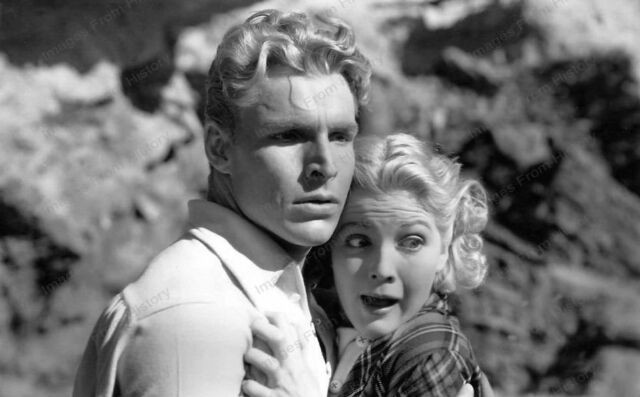
Crabbe’s last really successful outing came with his first TV-series, Captain Gallant of the Foreign Legion (1955-1957), filmed in Tunisia and Italy, in which he portrayed the title character. The series was, once again, aimed at kids, and starred his real-life son Cullen Crabbe as Captain Gallant’s sort of adopted son. The series was basically a western set in Africa. After the series ended in 1957, Crabbe’s acting career was waning, but by this time he had already set himself up as a businessman and stockbroker, and was dabbling in the swimming pool and swimwear industry, and he also set up a swimming camp for kids. By 1960 his acting career was more or less dead, although he did appear in minor roles from time to time. Despite his sci-fi fame, he didn’t appear in a sci-fi outing after the third Flash Gordon series for 39 years. His return came in 1979 in a segment of the TV show Buck Rogers in the 25th Century, where he played a role called Brigadier Gordon. In 1980 he appeared – top billed, nonetheless – as an aged and stern county sheriff in the low-low-budget sci-fi/zombie film The Alien Dead. His last film was the comedy The Comeback Trail, in which he played a washed-up western star brought back by two shrewd producers that try to kill him off as he gets too successful. He died in 1983 of a heart attack, prosaically after tripping over his wastebasket.
Crabbe did sometimes lament that because of his background, his acting talents weren’t taken seriously by the industry and critics. While this may seem a bit immodest, it is true that Crabbe wasn’t a horrible actor at all, but sort of got stuck with his kiddie matinee stuff for most of his successful career, and made the studios quite a buck over the years. His fame was intact for many decades, as Flash Gordon, Buck Rogers and Captain Gallant were aired prominently on TV in the fifties and sixties.
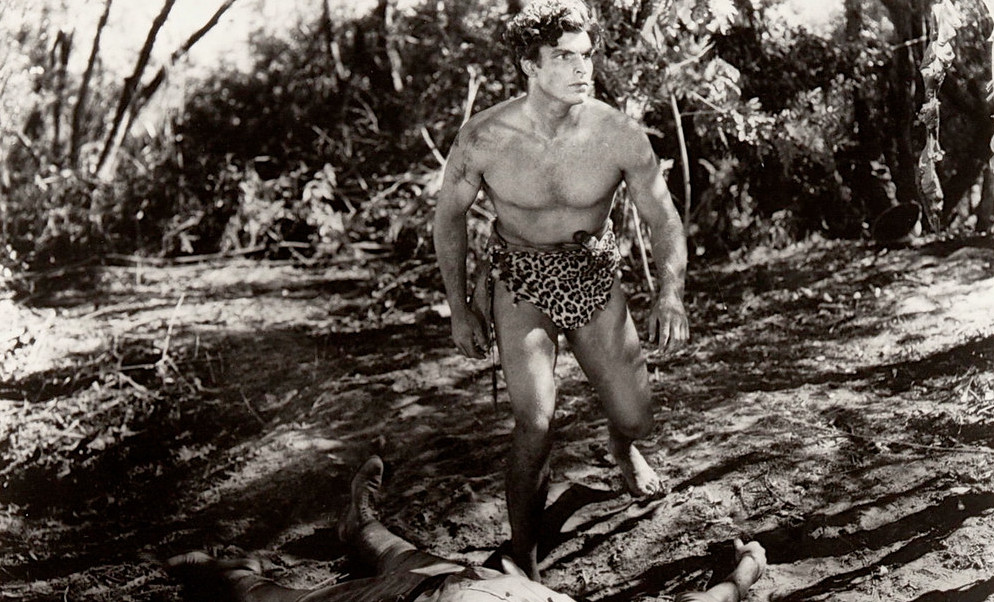
But then again, Crabbe could also have suffered the fate of James Pierce, who played Prince Thun in Flash Gordon. Pierce actually starred as Tarzan in the 1927 silent film Tarzan and the Golden Lion, a critically panned, but reasonably successful film – and he was slated for the role in producer Sol Lesser’s 12-part serial Tarzan the Fearless. Pierce was a former football player who married Tarzan author Edgar Rice Burrough’s daughter, and thus it was Burroughs who saw to it that he was cast in the 1927 Tarzan film, and a contract clause with Lesser stated that Pierce had to play the title role in the serial. But Lesser hated the idea of the tall, bulky footballer as Tarzan (he actually wore a leotard-like ”leopard shirt” in the film to cover up his belly), and had his sights set on Buster Crabbe. He tricked Pierce out of the role by offering a test reading for big company MGM, which turned out to be Shakespeare, a lost case for Pierce. The rest, as they say, is history. Crabbe became a legend, and Pierce was committed to often uncredited bit parts in films or as a supporting actor in cheap serials, mostly cast because of his size. He did, however, star in a 1932-34 radio series of Tarzan.

Ray ”Crash” Corrigan, a stuntman and ape suit specialist, played the role of the Orangopoid (a gorilla suit with a horn attached), which Flash fights at one point. Corrigan had previously been a stunt- and gorilla man on two Johnny Weissmuller Tarzan films and played some bit parts in films, but his fame was doubled the same year as Universal released Flash Gordon. Just a little over a month after Flash premiered, Republic released their own sci-fi serial Undersea Kingdom (1936, review), starring Crash Corrigan in the lead. Corrigan also played the lead or semi-lead in a number of cheap western serials, as well as in a few films. He never gave up his ape man job though, and as an owner of a gorilla suit, and with much experience, he was a cheap and talented addition to many films. He starred alongside both Boris Karloff (The Ape, 1940, review) and Bela Lugosi (Bela Lugosi Meets a Brooklyn Gorilla, 1952, review) in ape films, of which he made about a dozen, some of them verging on sci-fi. Science fictions fans, though, will always remember him for his last role, as the alien in the 1958 film It! The Terror from Beyond Space. The film has gained a reputation that far succeeds its quality because its makers sued the makers of Alien (1979) for having ripped off their script. In fact both productions ripped off the short story The Adventures of the Space Beagle.
Duke York who plays King Kala of the Shark Men later appeared as an uncredited extra in The Invisible Agent (1942, review). House Peters Jr. was a bit-part staple in films and TV-series, and appeared in a few sci-fi’s including King of the Rocket Men (serial, 1949), The Day the Earth Stood Still (1951, review), Red Planet Mars (1952, review) and an episode of The Twilight Zone (1960).
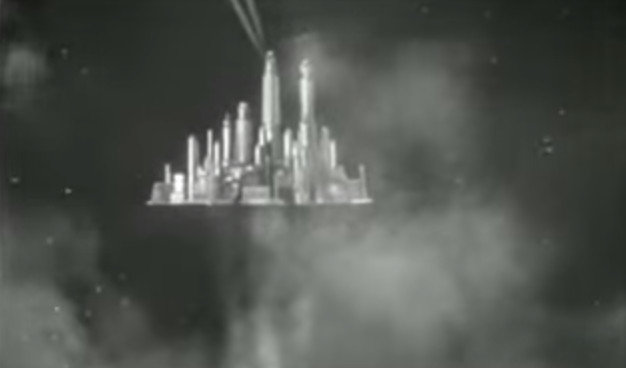
Prolific extra Roy Barcroft apperared in a number of sci-fi’s, including The Phantom Creeps (1939), Flash Gordon Conquers the Universe (1940), the series Adventures of Superman, Zombies of the Stratosphere, Radar Men from the Moon (all 1952), Commando Cody: Sky Marshal of the Universe (1953), and whose biggest credit is possible playing the Purple Monster in The Purple Monster Strikes from 1945. Lane Chandler was something of a sci-fi veteran, having already appeared in the 1933 disaster film Deluge (review) and the wacko western sci-fi musical comedy serial The Phantom Empire (1935, review). He would go on to both the Flash Gordon sequels and the Green Hornet serials, as well as the serials Undersea Kingdom (1936), Buck Rogers and the Phantom Creeps (1939), The Purple Monster Strikes (1945), and was picked up in sci-fi films in the fifties, like The Creature with the Atom Brain (1955, review), Space Master X-7 (1958). Saul A. Goodkind appeared in all Flash serials, as well as The Invisible Man’s Revenge (1944) and Planet Outlaws – but by far his greatest merit is appearing in the legendarily bad giant turkey movie The Giant Claw (1957, review).
Flash Gordon may not have been the the classiest of productions, but stood well out against contemporary TV serials, partly because of its impressive production and partly because of the brilliant casting, and of course the wonderfully imaginative work dreamed up by Alex Raymond and Don Moore, well adapted by the screenwriters. The serial created a burst of interest in science fiction serials, even if the fad didn’t carry over to feature films. Unfortunately no serials to come were able to outdo or even match Flash Gordon, partly due to budgetary reasons, but mostly because of poor scripting and the status of sci-fi as kiddie fare. Most of the so-called sci-fi serials were simply standard crime/mystery serials dressed up with sci-fi trappings like a masked villain with some doomsday machine acting as a gizmo MacGuffin.
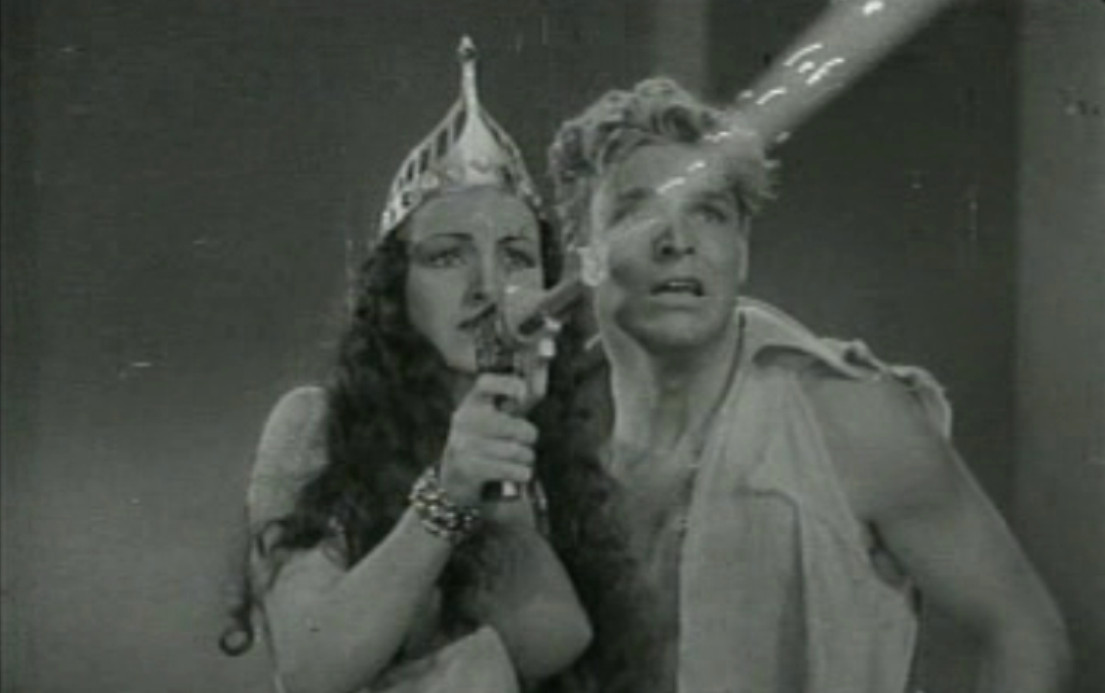
For better or worse, Flash Gordon was the introduction to science fiction for many people, young and adults, either as a newspaper comic or film serial. It did little to enhance the genre’s reputation among critics, and despite the serial’s success, outright sci-fi still wasn’t deemed a viable topic for a feature film. But without a doubt, it, along with Buck Rogers and other comics and pulp stories, planted the seed in many a young mind that would take root and grow for yet another 14 years, until 1950 and start of the so-called golden age of American science fiction films. The legacy of Flash Gordon cannot be overstated. The comic strip and the original serial spawned numerous adaptations, as radio play, novelisation, TV series, soft-porn film (Flesh Gordon, 1976), a feature film with a star cast in 1980 and a remake on the way as of 2019. It was a major influence on many of the UFO and space opera films of the fifties, and perhaps most notably inspired George Lucas to make his Star Wars epic in 1977, which in return inspired Dino de Laurentiis to make the 1980 Flash Gordon film, which has since become the best known version of the story for a “younger” generation.
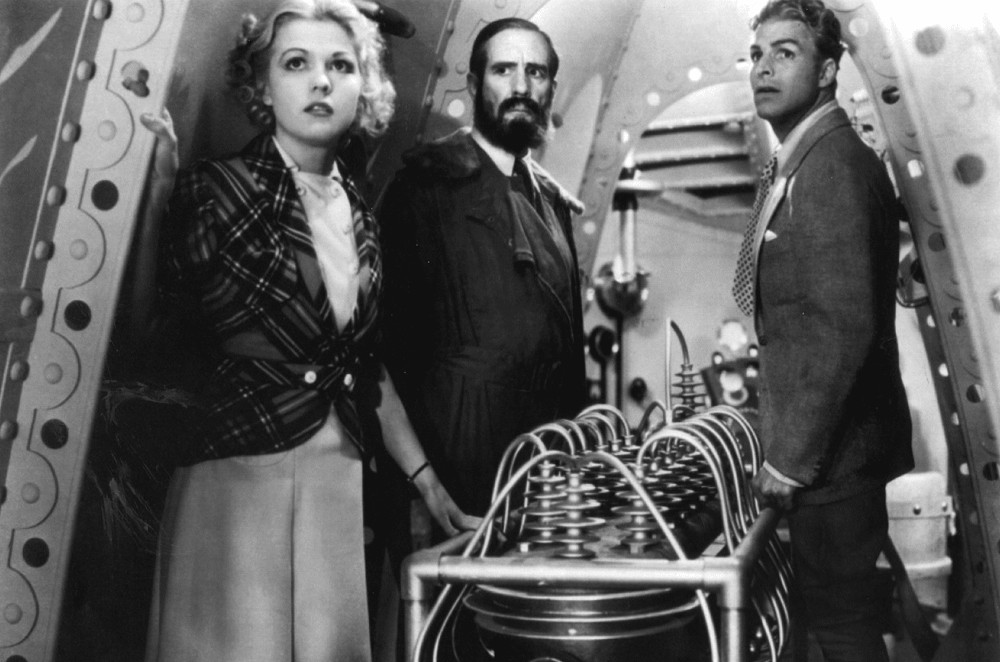
A remake of the 1980 film was announced in 2010, but has been stuck in development hell. The latest news as of writing in August 2019 is that Thor: Ragnarok (2012) director Taika Waititi has been brought on as at least the third potential helmsman of the project, which is now apparently going to be an animated film. The Guardian’s film blogger and resident geek Ben Child writes that the film’s main problem may well be Emperor Ming. Conjured up during the yellow scare of the thirties, Ming wasn’t quite as offensively racist as Buck Rogers’ swarthy Mongolian hordes of the 25th century, but still based on the same racist template of Fu Manchu and a slew of other Oriental villains in American (and European) culture at the time. That both Charles Middleton and Max von Sydow played the character with such dignity and gravitas and without any of the “Orientalism” that it invites takes some of the edge off the racism, as does the fact that when it boils down to it, Ming is not Chinese, he is an alien surrounded by just as outlandish other characters. And if viewed through a historical lens and as the brainless pop-culture pulp that they are, these old films are still fully watchable and enjoyable today.
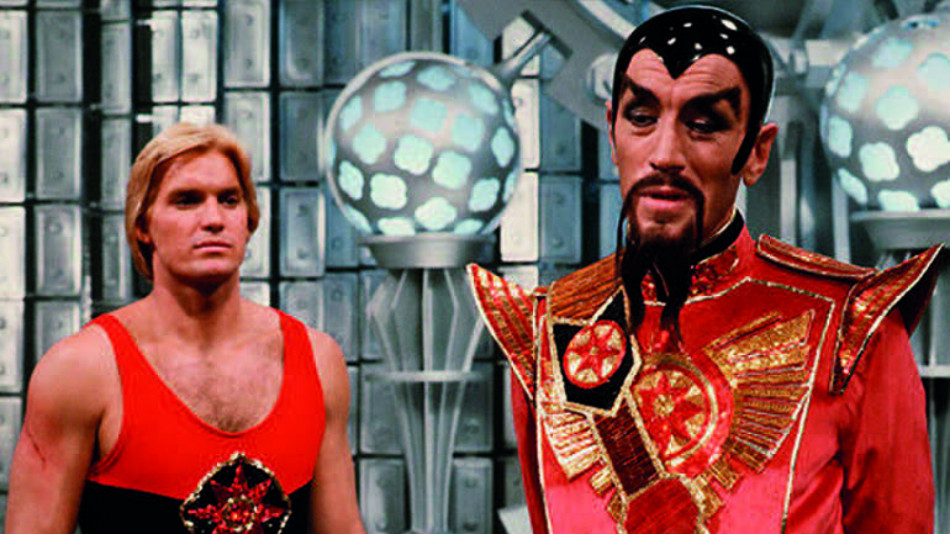
But the fact remains that audiences post-2020 will not swallow a racially stereotyped Fu Manchu villain in a new blockbuster film. It took Marvel three Iron Man films to muster the courage to introduce his arch enemy The Mandarin, and they did so with a rather ham-fisted twist which deflated the dated character’s importance, thus deflecting criticism of racial stereotyping. But on the other hand, making a Flash Gordon film without Ming is pointless. Flash Gordon is not an especially engaging character. He is no superhero, has no special attributes and no discerning character traits, apart from being a manly All-American gung-ho hero. Sure, Flash fought other villains that Ming in the comics, but it’s ultimately Ming that we turn up to see. He is to Flash Gordon what Moriarty is to Sherlock Holmes, Lex Luthor to Superman and Darth Vader to Luke Skywalker. The hero character is not complete without them. Perhaps Fox/Disney are hoping to somehow circumvent the problem by making the film animated, but to be fair I’m not quite sure how that’s going to help.
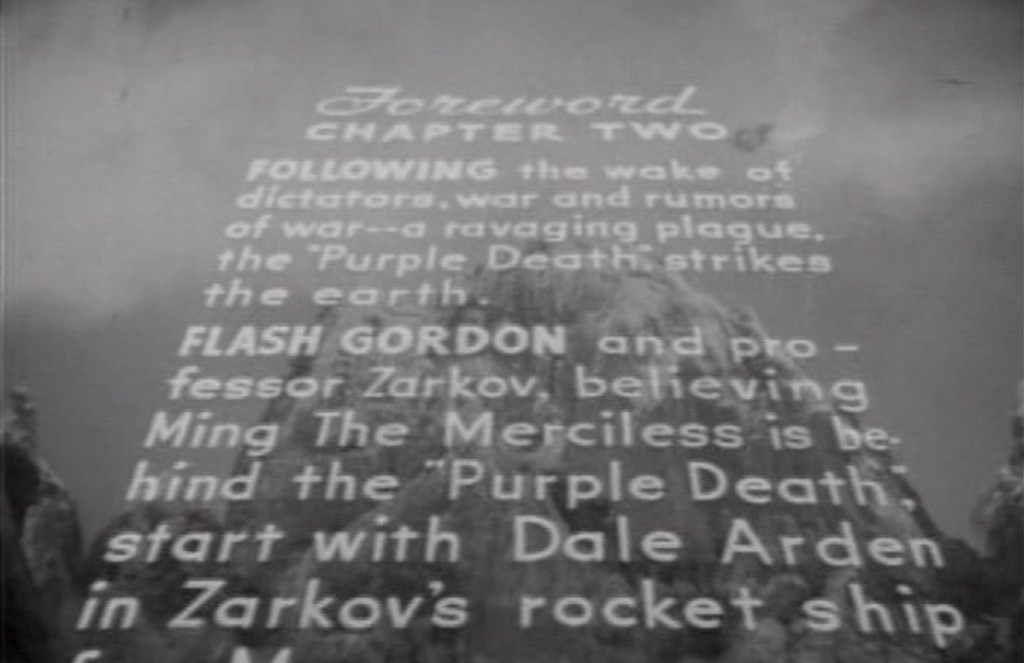
The 1936 Flash Gordon serial was – excluding the strange musical comedy Just Imagine – the first American space opera and the first outer space adventure in sound brought to the big screen. If one can look past the dated casual racism of the Ming character and the hokey sets and props, it is still as fun and exciting an adventure as it was 80 years ago.
Janne Wass
Flash Gordon. 1936, USA. Directed by Frederick Stephani, Ray Taylor. Written by Basil Dickey, Ella O’Niell, George H. Plympton, Frederick Stephani. Based on the comic strip by Alex Raymond and Don Moore. Starring: Buster Crabbe, Jean Rogers, Frank Shannon, Charles Middleton, Priscilla Lawson, Richard Alexander, Jack ”Tiny” Lipson, James Pierce, Ray ”Crash” Corrigan, Theodore Lorch, Richard Tucker, George Cleveland, Duke York, Muriel Goodspeed, Earl Askam, House Peters Jr. Cinematography: Jerome Ash, Richard Fryer. Editing: Saul Goodkind. Art direction: Ralph Berger. Special effects: Ed Keyes. Music: Jacques Aubran, Clifford Vaughan (editing). Produced by Henry McRae for Universal.

Leave a comment